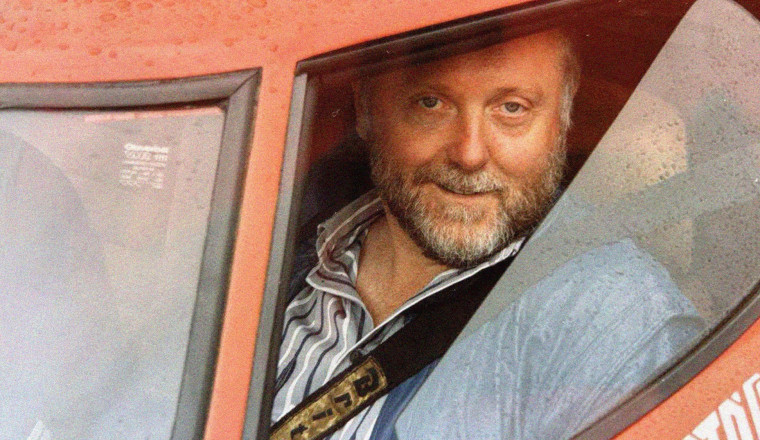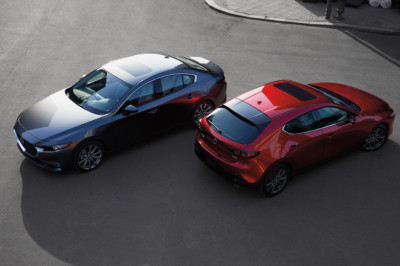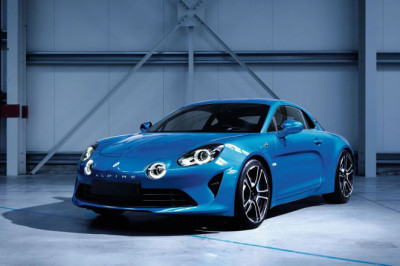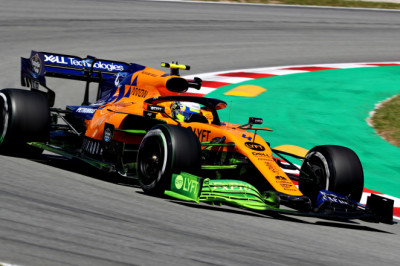
► CAR pays tribute to its former editor and publisher
► Ian Fraser set the tone for decades to come
► A formidable publisher and gifted writer, all in one
Ian Fraser, the editor, publisher and editorial godfather of CAR magazine during its formative years, has died. Revered for his uncompromising editorial vision and fiercely independent approach to publishing, Fraser helped transform CAR from a brash upstart into a true challenger – and toppler – of the establishment.
His death was announced via social media, prompting tributes from colleagues and fans across the world. Fraser edited CAR between 1971 and 1974, before co-founding Force Four Publishing and acquiring the title. As its managing director and later publisher until 1989, he not only bankrolled its ambitions but stood firmly behind its journalism, whatever the commercial cost.
As former CAR editor Gavin Green recalled: ‘Fraser marched into the editorial office soon after I arrived and announced: “Good news everybody, we’ve just lost Honda!” We all cheered and got on with our work, invigorated by our no-compromise stance and our owner’s unequivocal support.’
Fraser was instrumental in turning CAR into the ultimate outsider-turned-establishment journal. He inherited a title already defined clearly by Doug Blain, but under Fraser’s control CAR doubled down on its fearlessness. He introduced big-theme covers, bold design language and commentary that frequently offended the manufacturers the magazine relied upon.
With covers like ‘The automobile as a domestic appliance’, CAR challenged the creeping blandness of Japanese and Swedish cars, while celebrating the soul and verve of Italian and French designs. He brought in Mel Nichols, Wendy Harrop and a rotating cast of global contributors, turning the magazine into a cultural force and a visual feast.
CAR under Fraser was not just creatively daring, it was like a family. While he ran the business, his wife Robin handled subscriptions from the family home in Norfolk, mailed issues by hand and managed the accounts. Cheques were handwritten and sent by return post. As Gavin Green remembered, ‘FF Publishing was a minnow outgunning giants.’
Fraser nurtured the magazine’s all-Australian editorial leadership over the years – Doug Blain, Mel Nichols, Steve Cropley and Gavin Green – all of whom had cut their teeth at Wheels or Sports Car World in Australia. That background gave CAR its distinctive tone: sceptical, informed, witty and joyfully irreverent.
Fraser’s own career had started as a freelance racing reporter in Tasmania before he edited both Wheels and Sports Car World, giving Doug Blain his first job. It was Blain who, a few years later, convinced Fraser to join him in London and help take CAR to the next level.
In 1974, Fraser led a management buyout of the title, purchasing CAR from Nat Mags for just £5000 alongside Andrew Frankl and Roger Ames. He then handed over the editorial reins to Mel Nichols, continuing to shape the magazine as publisher and managing director. Never one to rest on past achievements, Fraser later became the launch editor of Supercar Classics, a title that combined his love of storytelling with high-end design and a collector’s mindset. It set the template for today’s glossy classic car magazines.
The early years were run on a shoestring – Fraser even bought a pub to help diversify the business – but by the late 1980s, the gamble had paid off. In 1989, the trio sold the magazine to News International for a reported £8 million. Fraser stayed on as managing director, and CAR’s fiercely independent remained despite being put under pressure as new ownership brought new priorities.
Ian Fraser wasn’t just a pioneering editor and publishing maverick; he was a gifted and distinctive writer. His stories weren’t dry road tests or recycled press releases, they were immersive adventures, rich with insight, humour and humanity. Fraser could be funny, obsessively detailed or coolly analytical – often all within the same article. He didn’t just drive cars. He interrogated them, understood them and translated that understanding into prose that made readers feel smarter.
Nowhere was this more evident than in his 1971 first drive of the Alfa Romeo Alfasud (above). The car wasn’t even on sale in the UK yet, but Fraser immediately recognised its brilliance and significance: ‘It neither feels nor behaves like a front-wheel drive… the steering is remarkably light despite 165-section radials and free from fight no matter what the circumstance.’
And then he zoomed out. He saw how the Sud positioned Alfa Romeo for the next generation, how the Pomigliano factory would employ 12,000 southern Italians, and how this car would slot neatly between Fiat’s 128 and Alfa’s own Giulia. It was a full-spectrum review – politically astute, technically literate and bang on the money. It would go on to be proclaimed CAR magazine’s Car of The Decade.
That same precision ran through his drive stories, including his 1979 tale of buying a Lancia Stratos (below, pictured with Fraser at the wheel) in Germany. It starts with a magazine advert and ends with one of the greatest homologation specials of all time parked on British plates. In between comes bank transfer stress, missing mirrors, Karlsruhe bureaucracy, dreary hotel meals, late-night ferry crossings and soaking carpets: ‘In a world of appeasement and compromise, this homologation special represents a purity of purpose that is unsurpassed… A treasure rather than a jewel… and I have a Stratos of my own.’
And then there’s the infamous Ferrari ride. In April 1983, Fraser told the story of being strapped into the passenger seat of a Mondial QV at Fiorano, with a factory test driver named Pietro at the wheel and no common language between them. What followed was a DPS of pure legend: ‘The V8 engine in the back was roaring like an Indian elephant given Madras curry powder instead of peanuts… my whole life was flashing before my eyes. And all I could see was myself making the same stupid, dumb, crazy mistake over and over again.’
It was classic Fraser: detailed, self-deprecating and devastatingly funny. His yellow streak may have glowed ‘luminescent through the back of his shirt’, but on the page he was fearless. He brought humanity, wit and perspective to the pages of a magazine packed with the best writers in the business.
Ian Fraser stood at the centre of a remarkable transcontinental editorial lineage. Through CAR, and countless writers who passed through their pages, this lineage set a benchmark. Clarkson famously read CAR obsessively as a teenager. But the influence spread far wider. The style Fraser helped define is now the default expectation for car writing that does more than just tell you how fast something goes.
Former CAR editor and industry legend, Steve Cropley, summed it up beautifully: ‘I remember Ian Fraser for four things. One, for taking a risk on me when any potential I had was far from obvious. Two, for his brilliance as a writer. He didn’t sound like anyone but himself. Always had a wry point of view, never fell for any blarney, always cut to the chase.
‘Three, for the fact that he was a dyed-in-the-wool car enthusiast. As soon as CAR started to thrive, he bought a Lancia Stratos – and went on from there. I remember a glorious afternoon when he had his Ferrari Daytona and I had my 308GTB and we did a tour of his favourite Norfolk back roads, swapping seats back and forth. He was like that, instinctively generous.
‘And four, he was the one publisher in history who enjoyed it if we had spats with advertisers, provided our case wasn’t too wild. He didn’t seem to care about the lost revenue. He knew it added to the maverick reputation of CAR at the time and approved, mainly because he’d done the same stuff when he was the editor. Working with Fraser filled up some of the best days of my life, and I’ll never forget them.’
Former CAR Japan correspondent Peter Nunn added: ‘Ian Fraser was a key member of the Aussie writing clan that shook up stuffy UK car magazines. Loved his vision and left field take on the industry. Brilliance of CAR and Supercar Classics, are testaments to all that. Great writer with a fine taste in cars, too.’
He is survived by his family, friends, and a generation of readers and writers who still carry the torch of fearless, characterful, intelligent motoring journalism.
Keith is the Editor of Parkers. During his career he has been the editor of Classic Car Weekly, Modern Classics and Honest John Classics, as well as writing for CAR, Practical Classics, Octane, Autocar and The Independent among others. Keith lives in rural Lancashire and enjoys buying and selling cars and reading and writing about them.
By Keith Adams
Devout classic Citroen enthusiast, walking car encyclopedia, and long-time contributor to CAR














